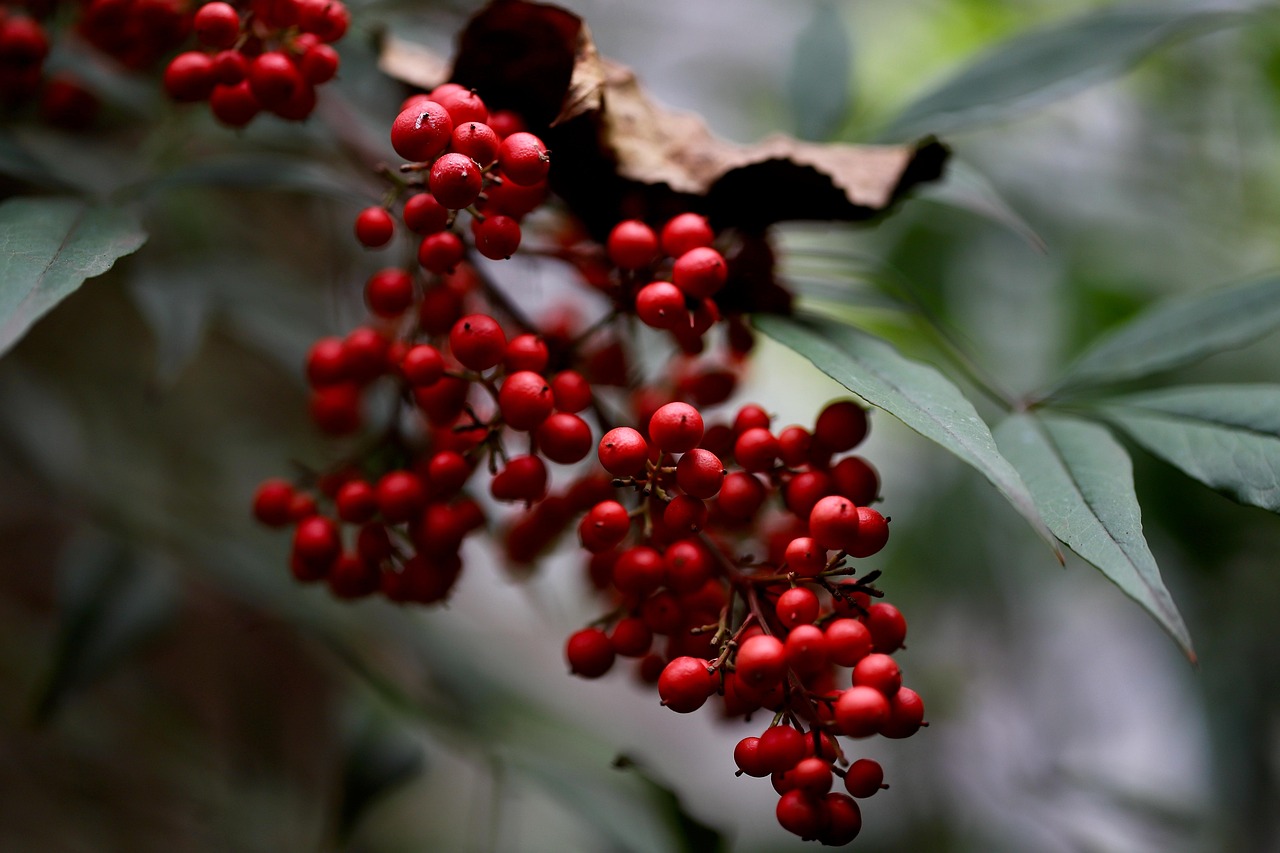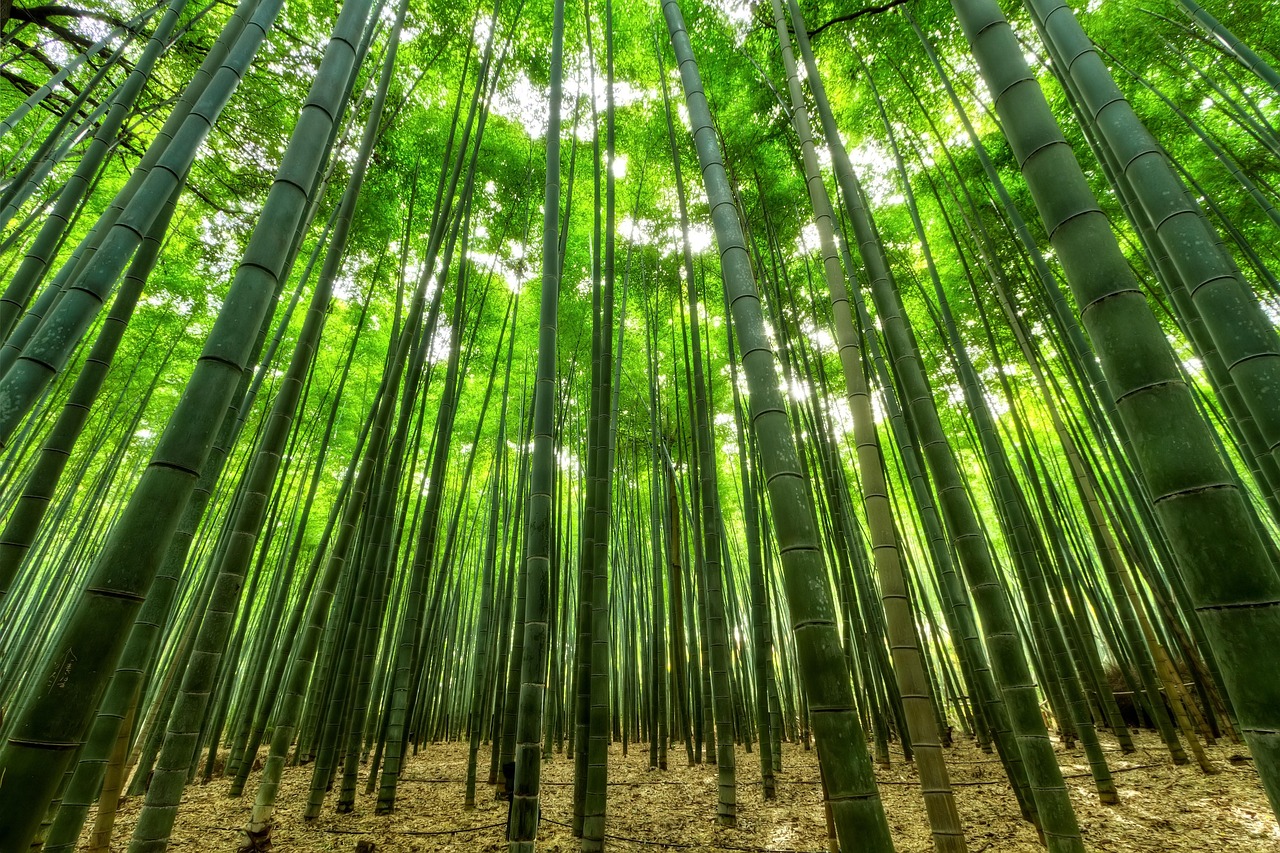Pruning bamboo is essential for creating eco-friendly fencing. It enhances the plant’s health, promotes growth, and ensures the durability of the structure. Proper techniques can help maintain the desired height and density, resulting in an attractive and functional barrier.
Bamboo is a versatile plant known for its rapid growth and strength. It is often used in various construction projects, including eco-friendly fencing. As an environmentally sustainable resource, bamboo can be an excellent alternative to traditional wood fencing. Pruning is a crucial part of maintaining bamboo for fencing purposes. It helps control its height, promotes healthy growth, and ensures that the bamboo remains dense enough to provide effective screening.

Understanding the right time and techniques for pruning bamboo is vital for anyone looking to create a bamboo fence. Different species of bamboo have unique growth patterns and requirements. Some may require more frequent pruning than others. Additionally, proper pruning can help prevent diseases and pests that may affect the health of your bamboo plants.
Benefits of Pruning Bamboo
There are several key benefits to pruning bamboo effectively. These advantages contribute not only to the overall health of the plant but also to the aesthetics and functionality of your bamboo fence. Some of these benefits include:
- Improved Health: Regular pruning removes dead or damaged canes, allowing the plant to direct energy toward healthy growth.
- Better Air Circulation: Pruning opens up the canopy, enabling better air circulation and light penetration.
- Enhanced Appearance: A well-pruned bamboo fence looks neater and more attractive, adding visual appeal to your property.
- Control Growth: Pruning helps manage the height and density of bamboo, preventing it from becoming unruly.
- Pest Management: Removing old or unhealthy canes can reduce the risk of pest infestations.
These benefits highlight the importance of incorporating regular pruning into your bamboo care routine. Knowing when and how to prune will help ensure your bamboo fencing remains vibrant and effective.

When to Prune Bamboo
The timing of pruning is critical for optimal results. Most experts recommend pruning bamboo in late winter or early spring before new growth starts. This timing allows you to assess the health of the canes and make informed decisions about which ones to remove. Here are some points to consider regarding the timing:
- Late Winter: This is when most bamboo species enter dormancy. Pruning during this time minimizes stress on the plant.
- Early Spring: As new shoots begin to emerge, you can prune any remaining old canes from the previous year.
- Avoid Summer: Pruning in summer may shock the plant and disrupt its growth cycle.
By timing your pruning correctly, you can help your bamboo thrive and maintain its intended purpose as fencing material.
How to Prune Bamboo
Pruning bamboo requires specific techniques to ensure healthy growth. Here are some steps to follow when pruning your bamboo:

- Assess the Plant: Before pruning, examine your bamboo carefully. Look for dead or damaged canes that should be removed.
- Select Tools: Use sharp pruning shears or loppers for clean cuts. Avoid using dull tools that can damage the plant.
- Remove Old Canes: Cut away any dead or unhealthy canes close to the ground. This encourages new growth and keeps the plant healthy.
- Thin Out Dense Areas: Remove some of the older, thicker canes from crowded areas to improve light and air circulation.
- Maintain Desired Height: Trim back taller canes to your preferred height while ensuring a uniform look across the fence.
Following these steps will help you achieve a well-maintained bamboo fence that not only serves its purpose but also enhances the beauty of your outdoor space.
Types of Bamboo for Fencing
Several species of bamboo are suitable for creating fences. Each type has unique characteristics that affect its suitability for specific fencing needs. Below is a table showcasing some popular bamboo species for fencing:
| Bamboo Species | Height (Feet) | Growth Rate | Hardiness Zone |
|---|---|---|---|
| Moso Bamboo | 50-75 | Fast | 7-10 |
| Black Bamboo | 30-50 | Moderate | 7-10 |
| Sasa Palmata | 3-5 | Fast | 6-9 |
| Golden Bamboo | 30-40 | Fast | 5-10 |
This table provides an overview of some common bamboo species used for fencing. Each species offers different heights and growth rates, making it essential to choose one that aligns with your desired fencing goals.

The selection of the right species combined with proper pruning techniques will contribute significantly to creating an eco-friendly, sustainable fence that enhances your landscape while being kind to the environment.
Tools Needed for Pruning Bamboo
Having the right tools is essential for effective bamboo pruning. Using appropriate equipment can make the process easier and more efficient. Here are some common tools you may need:
- Hand Pruners: Ideal for small canes and delicate cuts, hand pruners provide precision and control.
- Loppers: For thicker canes, loppers are necessary. They offer greater leverage and can handle larger branches.
- Saw: A pruning saw is useful for cutting down very thick or old bamboo canes that cannot be handled by pruners or loppers.
- Gloves: Protect your hands from thorny species and ensure a better grip on tools.
- Safety Glasses: These protect your eyes from debris that may fly while cutting.
Using high-quality, well-maintained tools will not only make your pruning tasks easier but also contribute to healthier cuts, which is crucial for the well-being of your bamboo plants.
Techniques for Pruning Bamboo Canes
Pruning techniques can vary depending on the specific goals you have for your bamboo fence. Understanding these methods will help you achieve the best results. Below are some effective pruning techniques:
1. Selective Pruning
This technique involves carefully selecting which canes to remove based on health and growth patterns. By focusing on removing older or weaker canes, you can encourage new growth and maintain the overall health of the bamboo clump.
2. Topping
Topping is the process of cutting back the height of the bamboo canes to control their size. This method is especially useful if you want to maintain a specific height for your bamboo fence. When topping, make sure to cut just above a node to promote healthy regrowth.
3. Thinning
Thinning involves removing some of the canes to improve air circulation and light penetration within the bamboo grove. This technique helps prevent overcrowding and allows for better growth of remaining canes. Aim to maintain a balanced look while ensuring that enough light reaches each plant.
4. Cleaning
Cleaning refers to the removal of dead leaves, branches, and other debris that may accumulate around the base of the bamboo. This not only enhances the appearance but also reduces the risk of pests and diseases.
Common Mistakes in Bamboo Pruning
Even experienced gardeners can make mistakes when pruning bamboo. Being aware of common pitfalls can help you avoid them. Here are some typical mistakes:
- Pruning at the Wrong Time: Cutting back bamboo during its active growth period can shock the plant and hinder growth.
- Using Dull Tools: Dull tools can crush the stems instead of making clean cuts, leading to potential disease issues.
- Over-Pruning: Removing too many canes at once can destabilize the plant and affect its overall health.
- Ignoring Safety Precautions: Failing to use safety gear can lead to accidents while handling sharp tools.
Avoiding these common mistakes will help you maintain a healthy and visually appealing bamboo fence.
Caring for Bamboo After Pruning
After pruning, it’s important to care for your bamboo properly to ensure it recovers well and continues to thrive. Here are some essential care tips:
- Watering: Ensure that your bamboo receives adequate water after pruning, especially if you prune during dry periods. A deep watering will help establish new growth.
- Fertilizing: Applying a balanced fertilizer after pruning can provide nutrients that support new growth. Look for organic options that are eco-friendly.
- Pest Control: Monitor your bamboo for signs of pests or diseases after pruning. Early detection can prevent larger problems later on.
- Mulching: Adding mulch around the base of your bamboo can help retain moisture and suppress weeds as new growth begins.
By following these care tips after pruning, you will support your bamboo’s recovery and promote healthy, vigorous growth as it continues to develop into an attractive fence.
The Role of Bamboo in Sustainable Landscaping
Bamboo plays a significant role in sustainable landscaping practices. Its rapid growth and ability to thrive in various environments make it an excellent choice for eco-friendly projects. Some benefits include:
- Carbon Sequestration: Bamboo absorbs carbon dioxide from the atmosphere, helping combat climate change.
- Erosion Control: The dense root system of bamboo helps prevent soil erosion on slopes and hillsides.
- Biodiversity Support: Bamboo groves provide habitat for various wildlife species, contributing to local biodiversity.
- Low Water Requirements: Once established, many bamboo species require less water than traditional landscaping plants.
The use of bamboo in landscaping not only benefits individual properties but also contributes positively to the environment. Incorporating bamboo into your fencing design aligns with sustainable practices, making it a responsible choice for homeowners looking to enhance their outdoor spaces.
As you consider creating an eco-friendly fence with bamboo, understanding these various aspects will equip you with the knowledge needed to manage your plants effectively and sustainably.
Designing Your Bamboo Fence
When creating an eco-friendly bamboo fence, design plays a crucial role. The design not only influences the visual appeal but also affects the functionality and longevity of the fence. Various factors should be considered in the design process, including height, spacing, and orientation.
Height and Privacy
One of the first considerations when designing a bamboo fence is its height. The height of the fence will determine the level of privacy it provides. Here are some things to keep in mind:
- Desired Privacy Level: Determine how much privacy you want. For complete privacy, consider a height of at least 6-8 feet.
- Local Regulations: Check local zoning laws and regulations that may limit fence height.
- Proportion: Ensure the height of the fence is proportionate to your house and surrounding landscape.
Spacing and Density
The spacing of bamboo canes is another important factor in the design of your fence. Proper spacing ensures that the fence is both functional and aesthetically pleasing.
- Close Spacing: If you want a denser, more opaque fence, plant the bamboo canes closer together (about 3-4 inches apart).
- Wider Spacing: For a more open design that allows light and air to pass through, space the canes further apart (about 6-12 inches).
- Mixing Heights: Consider using canes of varying heights for visual interest and to create a more natural look.
Orientation and Placement
The orientation of your bamboo fence can impact its effectiveness and beauty. Here are some tips for optimal placement:
- Sunlight Exposure: Position your fence to maximize or minimize sunlight according to your garden’s needs. This is particularly important if you plan to grow plants near the fence.
- Wind Protection: Consider placing the fence in a way that offers wind protection to your garden or outdoor living areas.
- Aesthetic Flow: Ensure that the fence complements your home’s architectural style and blends well with surrounding landscapes.
Maintenance of Bamboo Fencing
Once your bamboo fence is installed, ongoing maintenance is necessary to ensure its longevity and appearance. Here are some essential maintenance tips:
Regular Inspections
Conduct regular inspections of your bamboo fence to identify any issues early on. Look for signs of wear, damage, or pest infestations.
- Check for Cracks: Inspect canes for cracks or splits that can weaken the structure.
- Pest Monitoring: Keep an eye out for pests like aphids or borers that may affect the health of your bamboo.
- Mold and Mildew: Look for signs of mold or mildew, especially in humid climates. Address these issues promptly to prevent further damage.
Cleansing the Fence
Cleaning your bamboo fence regularly will help maintain its appearance and prevent deterioration.
- Use Mild Soap: Clean the surface with mild soap and water using a soft brush to remove dirt and grime.
- Rinse Thoroughly: After washing, rinse thoroughly with water to ensure no soap residue remains.
- Drying: Allow the fence to dry completely to prevent mold growth.
Treatment Options
Treating your bamboo fence can enhance its durability and resistance to weather conditions. Here are some options to consider:
- Bamboo Sealants: Applying a sealant can protect bamboo from moisture and UV damage. Look for eco-friendly options that are non-toxic.
- Pest Control Chemicals: If pests become an issue, use organic pest control solutions that won’t harm beneficial insects or the environment.
- Sanding Rough Areas: Smooth out any rough patches on the bamboo surface to prevent splinters and enhance aesthetics.
Creative Uses of Bamboo Beyond Fencing
Bamboo is not only limited to fencing but can also be utilized in various creative ways within landscaping and gardening. Here are some innovative uses for bamboo:
- Bamboo Trellises: Use bamboo poles to create trellises for climbing plants such as beans or peas.
- Garden Edging: Create natural borders around garden beds using cut bamboo canes to define spaces clearly.
- Bamboo Furniture: Craft outdoor furniture such as benches or tables from bamboo for a cohesive aesthetic.
- Pots and Planters: Utilize hollow bamboo sections as unique pots or planters for smaller plants or succulents.
Bamboo’s versatility makes it an excellent material for various landscaping applications, allowing homeowners to express their creativity while remaining environmentally conscious.
As you explore the possibilities of bamboo fencing and its many applications, consider how each element contributes to a sustainable and beautiful outdoor space. This thoughtful approach will enhance both functionality and aesthetics in your garden.
Enhancing Your Bamboo Fence with Plants
To further enhance the aesthetic appeal and functionality of your bamboo fence, consider incorporating plants around or within your bamboo design. This not only adds beauty but also creates a more integrated natural environment. Here are some plant options to consider:
- Climbing Plants: Vines such as jasmine, clematis, or morning glory can be trained to grow along the bamboo fence, providing additional coverage and fragrance.
- Flowering Shrubs: Planting flowering shrubs like hibiscus or butterfly bushes can add vibrant colors and attract pollinators to your garden.
- Herb Gardens: Consider planting herbs like basil or rosemary in pots near the bamboo fence. They provide culinary benefits and can make your outdoor space more functional.
- Grasses and Perennials: Ornamental grasses or perennial flowers can soften the edges of your bamboo fence while providing seasonal interest.
By carefully selecting plants that complement your bamboo fence, you can create a lush, vibrant landscape that enhances both privacy and beauty.
Environmental Impact of Bamboo Fencing
Bamboo is widely recognized for its sustainability. Unlike traditional hardwoods, bamboo matures quickly, making it a renewable resource. The environmental impact of using bamboo fencing includes:
- Reduced Deforestation: Utilizing bamboo helps decrease the pressure on forests, preserving biodiversity and ecosystems.
- Soil Health Improvement: Bamboo contributes to soil health by preventing erosion and improving nutrient content through its root systems.
- Carbon Footprint Reduction: As a carbon sink, bamboo absorbs carbon dioxide more effectively than many tree species, contributing to climate change mitigation.
- Water Conservation: Bamboo generally requires less water than traditional crops, making it a more sustainable choice for landscaping.
The environmental benefits of bamboo fencing not only contribute to a healthier planet but also promote sustainable landscaping practices that homeowners can feel good about.
Cost-Effectiveness of Bamboo Fencing
Bamboo fencing offers an attractive balance between affordability and durability. Here are some factors that contribute to the cost-effectiveness of bamboo as a fencing material:
- Low Material Costs: Bamboo is often less expensive than traditional wood fencing materials, making it an economical choice for homeowners on a budget.
- Minimal Maintenance: Once established, bamboo requires less maintenance compared to other materials, reducing long-term costs related to repairs and replacements.
- Longevity: With proper care and maintenance, bamboo fencing can last for many years, providing excellent value over time.
- Diverse Applications: The versatility of bamboo allows it to be used in various landscaping applications, further maximizing its value as an investment.
This cost-effectiveness makes bamboo an appealing option for those looking to create beautiful outdoor spaces without breaking the bank.
Final Thoughts
Creating an eco-friendly fence using bamboo not only enhances the beauty of your outdoor space but also promotes sustainability. The benefits of bamboo—its rapid growth, minimal environmental impact, and cost-effectiveness—make it an ideal choice for homeowners looking to make environmentally conscious decisions. By understanding the proper techniques for pruning and maintaining bamboo, as well as effectively integrating it with other plants and landscaping elements, you can create a stunning and functional fencing solution.
The journey of establishing a bamboo fence is not merely about aesthetics; it is about fostering a connection with nature and contributing positively to the environment. As you embark on this endeavor, remember that each decision—from pruning techniques to plant selections—plays a vital role in developing a sustainable landscape. Embrace the possibilities that bamboo offers and enjoy the many rewards it brings to your home and garden.
By following best practices in pruning, maintenance, and design, your bamboo fence can thrive as a beautiful focal point in your landscape while supporting ecological health and sustainability. Consider how each aspect of your bamboo fencing project contributes to a greener future while creating an inviting space for you and your family to enjoy.
